#oldest clonal tree
Explore tagged Tumblr posts
Note
i have seen old tjikko - a clonal tree that's the most recent of several genetically identical trees that have been growing in the same spot for nearly 10 000 years. it likely sprouted for the first time very shortly after the ice receded from that part of sweden.
unh I love her

20 notes
·
View notes
Text

"Great Basin Bristlecone pines are remarkable for being the oldest non-clonal species on the planet. This strange tree, shaped by the wind, snow, and rain has survived over thousands of years, overseeing the rise and fall of great empires, growing through ice-ages and catastrophic volcanic eruptions. But their ability to survive these harsh environments and adverse growing conditions is exactly their secret to great longevity." - Nat'l Park Service (nps.gov)
#illustration#artists on tumblr#digital art#background#background art#illustrators on tumblr#surreal#surreal art
557 notes
·
View notes
Text

5th Oldest Tree In The World In North Carolina
A 2,624+ Year Old Blad Cypress
The Black River bald cypress, known as BLK227, has an inner ring dating back to 605 BCE, crossdated with other trees in Black River dating to 70 BCE. With four radii from this tree spanning from 70 to 605 BCE, BLK227 is at least 2,624 years old as of 2018. This places the bald cypress as the fifth oldest continuously living, sexually reproducing, non-clonal tree species worldwide, according to dendrochronology. Additionally, the bald cypress holds the title of the oldest-known wetland tree species on earth.
Three Sisters Swamp - Ivanhoe NC 📍
credit: Coleen Britt
68 notes
·
View notes
Note
methuselah, the oldest (non-clonal) tree in the world at 4,856 years
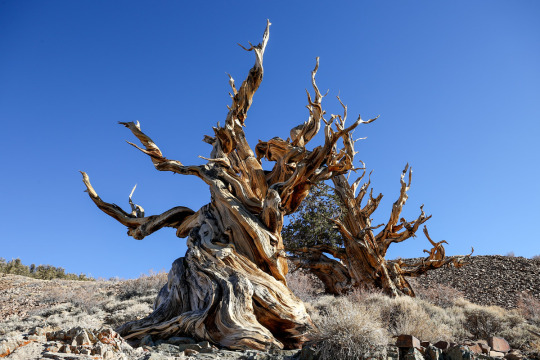

61 notes
·
View notes
Text
Pando - The Largest Single Organism by Mass and 14,000 years old, and some perspective on just how old that is.
A random thought came to my head last night...
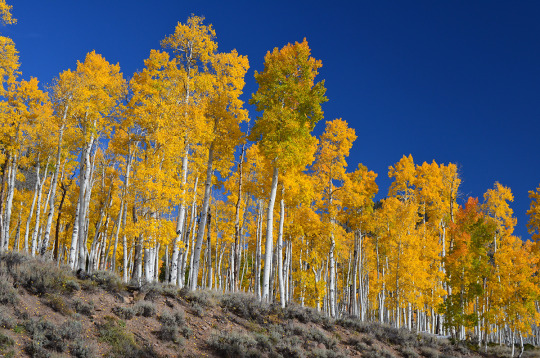
This is Pando.
All of this? Is a single male aspen tree. This entire thing is a single tree with multiple stems sharing a single root system.
It is the largest tree by mass, and the heaviest single organism, weighing in at 6000 metric tons. For perspective, that's 20 blue whales in mass.
But what also intrigues me is that... well. It's an old tree.
Established in 12,000 BCE, meaning it would be 14000 years old by 2023.
By the the last Smilodons died out in 10,000 BCE, it would have already been 2000 years old.
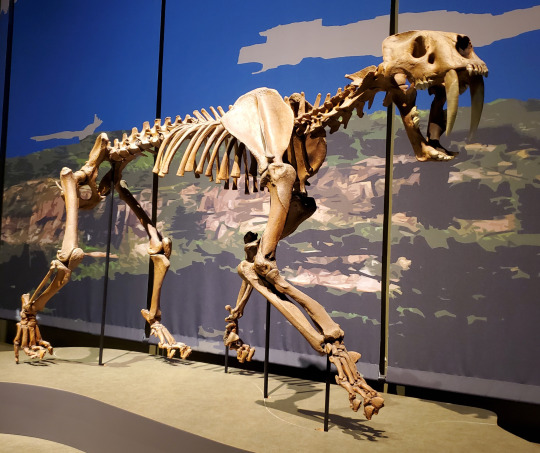
And Pando is still a youngster compared to the high estimate age of this clonal colony of sea grass estimated to be 100,000 years old.
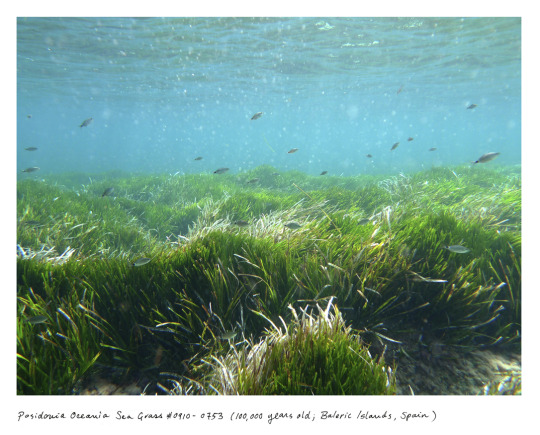
For perspective, when the last Neanderthal died in 40,000 BCE?
This sea grass would have already been 60,000 years old.
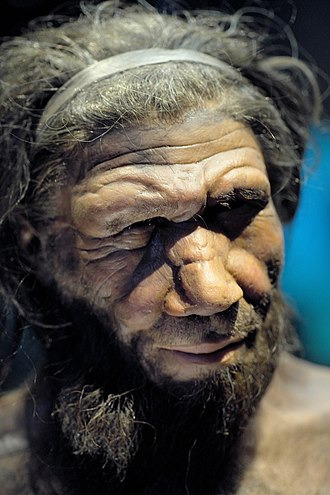
If human civilization (as in, the kind of organized polity that can be identified with things as "states" and "urbanization" among a plethora of other things) was established during 5000 BCE, and thus 7000 years old:
Pando would have already been 5000 years old.
The Sea grass colony would have already been 93,000 years old.
And considering that the oldest vertebrate, that is the Greenland Shark can live for 500 years?
All of human civilization encompasses the lifespans of just 14 Greenland Sharks.
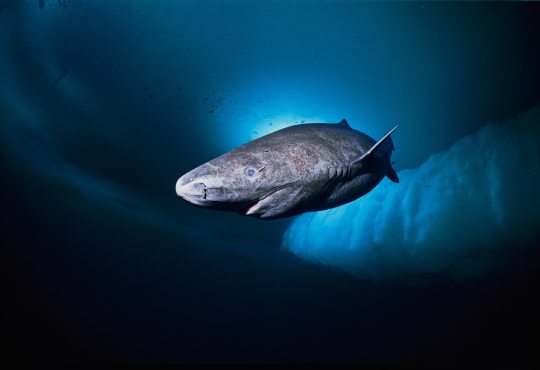
I dunno... it just really shows that we pretty are a tiny blip in the grand scheme of Earth's geological history.
A very humbling thought if you ask me.
#paleontology#anthropology#history#ancient history#botany#science#human history#life on earth#pando#greenland sharks#shower thoughts
361 notes
·
View notes
Text
This tree has lived for 13,000 years. California’s housing crisis could doom it. (Washington Post)
At first glance, one of the world’s oldest living organisms doesn’t look like much — a collection of shrubs nestled atop a hill in a rocky gully. But those shrubs are just the crown of a giant, spreading oak tree, 90 feet long and 30 feet wide. Most of the tree is underground.
Estimated to be 13,000 to 18,000 years old, the tree — known as the Jurupa Oak — is older than almost any other plant on Earth. It has survived an ice age and rapid climate warming. Its leaves may have brushed against saber-toothed cats and 500-pound ground sloths. But now, environmentalists and locals worry that the ancient tree is under threat from a more quotidian force in modern California: development.
The Planning Commission of Jurupa Valley, a city of 100,000 an hour east of Los Angeles, is poised to approve a 1.4-square-mile development that includes a business park, 1,700 homes and an elementary school. Light-industry buildings would stand just a few hundred feet from the ancient tree.
The city believes that the project will boost the local economy. The site’s developer has said it plans to protect the tree, but environmentalists believe that the construction and resulting development could be deadly to the Jurupa Oak.
“It’s unique among most things on the planet,” said Aaron Echols, conservation chair for the Riverside-San Bernardino chapter of the California Native Plant Society. “We need to be absolutely sure that we’re not going to cause harm to this plant.”
The tree has plunged the Jurupa Valley into an ongoing debate in California: How to balance the state’s growth and need for housing with protecting its rich biodiversity?
Think about the oldest tree on Earth and you may picture a bristlecone pine known as “Methuselah” and estimated to be close to 5,000 years old. The Jurupa Oak fits into a different category: It’s a Palmer’s oak, which is a species of “clonal tree,” a network of genetically identical shrubs connected through a shared root system. Unlike in normal trees, none of the original tissue is still present; instead, after a wildfire, the tree will spring out new, genetically identical shoots from burned stumps.
71 notes
·
View notes
Text
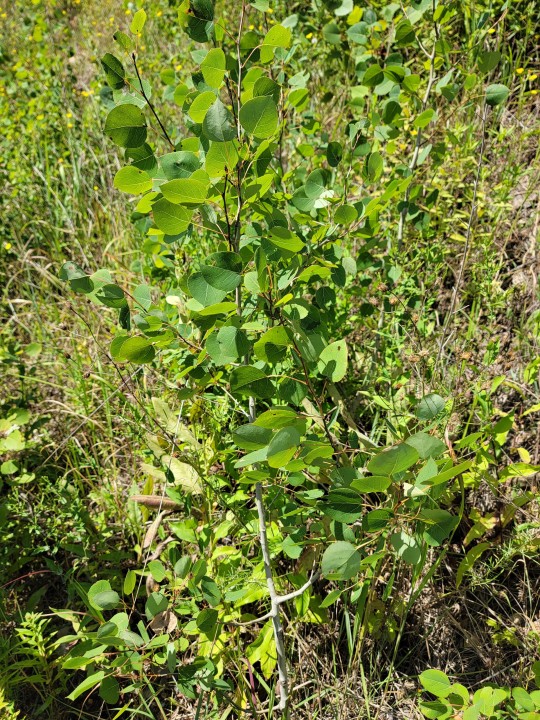

Quaking Aspen - Populus tremuloides
Today I want to bring up a charismatic favorite: the Quaking Aspen. Like all populus species, it's a fast growing, clonal colony forming, northern extreme and mountain loving tree (just like its Eurasian sister species: A. tremula) with an incredibly wide range of distribution. In addition to all those interesting qualities, the oldest known organism is presumed to be a Quaking Aspen colony (Pando, in Utah)
General identification before I can talk about the more interesting bits, Aspens are best known for their yellow autumn leaves and smooth white bark with dark knots, they can grow as large as 60' but depending on their environment can be stunted to around 5-20' (think of krummholz). Leaves of this species appear slightly heart shaped and retain the same sheen on both sides (image 1). Plants are unisexual meaning individuals either have male or female flowers, interestingly enough this is a good method to distinguish where one colony begins and ends by looking at the color of the branches in spring (see image from Colorado below, note trees with light green and those without). Emerging catkins are white at first which become green and longer as the season changes, male catkins having slightly longer stamen but female fruiting catkins ultimately growing longest at 10 cm. Seeds are small capsules with silky hairs to assist in wind dispersion, these trees are ruderal so they produce around 1.6 Million a season with many unable to germinate. Seedlings often need consistent moisture and full sun to even germinate, most of the seeds growth goes to root structure the first year.

The name Quaking Aspen (or trembling per the Latin) refers to the extremely mobile habit of the leaf. Leaves are connected to flexible petioles (stems) which flip around in the slightest breeze. Environmentally speaking, I was once told that leaves have chlorophyll on both sides however this stem could also be a biological strategy to cope with harsh wind conditions in mountainous environments, I didn't encounter any recent research verifying this though. Interestingly enough, given the harsh nature of which this tree thrives, apparently, there is chlorophyll in its trunk, allowing extra energy to enter the tree when it's leaves are gone.
Quaking Aspen is an early succession species, able to reestablish/colonize a site after a fire or other major disturbance. Many of Upstate New York's famous Aspen forests are actually a result of logging and fires in the early 1900s rather than a typical forest compostion. Establishment is different depending on opportunity, in the west its often long lived clonal roots systems, in the high arctic its often through wind blown seed, in the east its generally short lived clones out-competed by hardwood/conifer forest after a century, and in its furthest southeastern range I typically only encounter individuals on rocky outcrops or former fields.
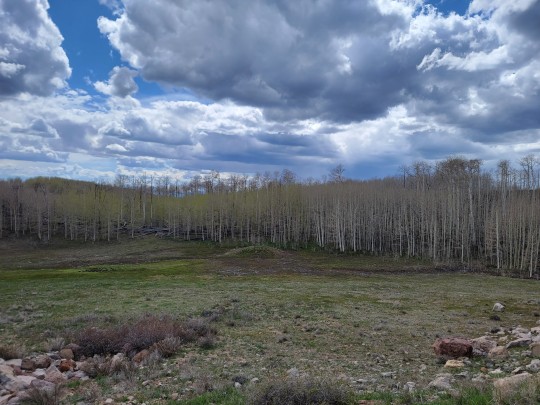
Above ground trees usually live less than a century, in the east maybe 50-80 years given our moisture, out west individual trunks can live two centuries. It's common to find dense forests with even-age trees since clonal root structures re-emerge together (Image above from Bluebell Knoll Mountain in Utah). Its also thought that the root system can live for two millenia or longer, Pando being an example of extreme longevity (I mean 40,000 years would survive an ice age, even in Utah there would be mountain glaciation, thats quite spectacular if true). Ironically, one of the best survival tools in the Aspen's playback is fire recovery, otherwise it will get out-competed/shaded pretty fast (see the context in image 2, that NJ forest used to have lots of aspen).
All this in mind its good to point out that Aspen's early successional habit makes it great for ecological restoration. It's common to find them as the first pioneers on former mines or superfund sites (aspen grove below from Palmerton gap, Pennsylvania). Unfortunately one of the negative side affects is that populus species often bring up a lot of heavy metals in their leaves and wood meaning they can re-contaminate through their own biological accumulation. Which is good for extracting small scale contaiminants...very bad for large sites where you need to trap metal under soil to prevent toxins from eroding offsite
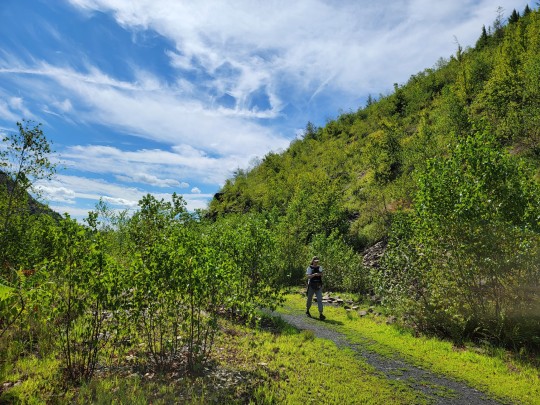
All this being said Quaking Aspen's large geographic range mirrors that of the last glacial maximum, implying a rapid spread onto retreating glaciers. This also suggests a growth habit requiring wet or moist soil conditions. This range is North West to Alaska nearly touching the Arctic Ocean at its Northern-most range in the Yukon, then east to Newfoundland; south west to Mexico (usually restricted to high mountains) and east from Iowa to New Jersey (with scattered populations in West Virginia).
Since Aspen often colonizes sites of former glaciation, with climate change it's predicted there will be a northward and uphill progression of populations. Aspen isn't really in intense danger of dissappearing but studies have shown major stressors (draught, extreme heat, over-grazing) cause higher mass-mortality events from minor stressors (typically disease and insect herbivorey). Given the fact that many forests are clonal there was a question of low genetic diversity amoung populations, yet interestingly, individuals undergo somatic mutations (DNA alterations after conception) and are extremely variable, so different individuals often place different energies into different defense tactics.
In addition to all of this information Aspens are primarily used today to make paper pulp. Historically settlers used aspen to derive quinine (think gin and tonic), and indigenous tribes have a history of using big trunks to create dug out canoes.
So please go out to your nearest mountain/boreal forest to enjoy the Quaking Aspen's lovely smooth bark and haunting shaking in the wind!
42 notes
·
View notes
Text
It's Tu BiShvat!
Since today is all about trees (although I'm... kind of late to post this), allow me to ramble for a few minutes about some of my favourites!
🌳🌲🌳🌲🌳🌲🌳🌲🌳🌲🌳
Arbutus menziesii
(Other names include qaanlhp (Hul’q’umi’num), dis-tā'-tsi or kou-wät′-chu (Konkow), ḰEḰEIȽĆ (SENĆOŦEN), arbutus, madrone, madrona, and bearberry.)


Arbutus menziesii is a broadleaf evergreen tree native to the Pacific northwest. It's distinctive for it's flaky reddish bark, which peels away in thin strips as the tree matures to reveal a smooth greenish layer beneath. Arbutus menziesii is also an invaluable nesting site for many birds, and its berries provide food for a variety of bird and mammal species!
Thuja plicata
(Other names include xhpey'ulhp (Hul’q’umi’num), western red-cedar, giant arborvitae, western arborvitae, giant cedar, shinglewood, and the 'tree of life' in Kwakwaka'wakw culture.)


Thuja plicata is a coniferous evergreen tree native to the Pacific northwest. These trees are long-lived, with lifespans of about 1000 years - and in that time, they can grow upwards of 70 metres (230 ft) tall, and 7 metres (23 ft) in diameter. The Cheewhat Giant specifically, located in Pacific Rim National Park Reserve, is one of the largest known trees in the world!
Tsuga heterophylla
(Other names include western hemlock, and western hemlock-spruce. Note: I couldn't find literally any Indigenous language names for these trees, but if anyone knows any (for any of these trees, for that matter) I'd be more than happy to hear them!)

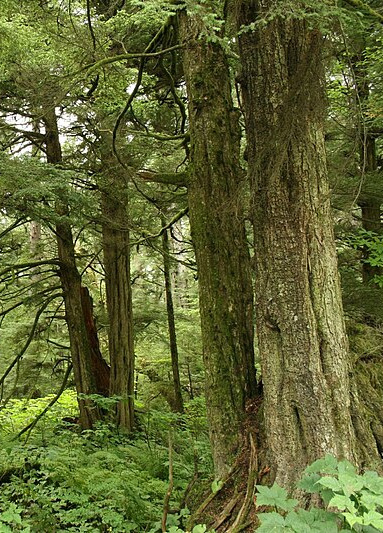
Tsuga heterophylla is a confierous evergreen tree native across the Pacific northwest between California and Alaska (they're not all going to be from the PNW I promise, I just live here). It's one of the most common species in the region, distinguished by it's scaly bark and it's droopy lead shoot. Tsuga heterophylla can notably live for over 1200 years! I love these guys so much.
Ginkgo biloba
(Other names include ginkgo or gingko, yínguǒ or bái guǒ (Mandarin), Ngan-gwo or yínxìng (Cantonese), ichou or ginnan (Japanese), eunhaeng (Korean), and maidenhair.)


Easily one of the most unique trees on this list, Ginkgo biloba is a gymnosperm tree native to East Asia. Fossils of very similar plants belonging to the same genus have been found dating all the way back to the Mid-Jurassic Ginkgo biloba itself is the last living member of its order. On the topic of longevity, these trees can potentially live for more than 2500 years!
Pinus halepensis
(Other names include Aleppo pine, Jerusalem pine, oran yerushlim (Hebrew), Sanawbar el halab (Arabic), and halepensis pine.)
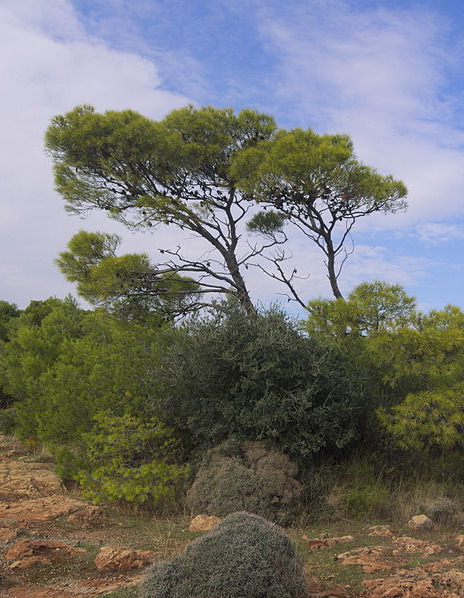

Pinus halepensis is a pine native to the Mediterranean region, distinguished by its thin, wispy needles, reddish bark, and narrow cones, which may open and disperse seeds in the event of a forest fire. The species excels at preventing soil erosion, and thrives in dry, hot climates. The tree's resin and pine nuts also have culinary applications, which I'd love to try someday!
Populus tremuloides
(Other names include A’kíítoyi (Nitsitapiisinni), quaking aspen, trembling aspen, American aspen, mountain aspen, golden aspen, trembling poplar, white poplar, and popple.)
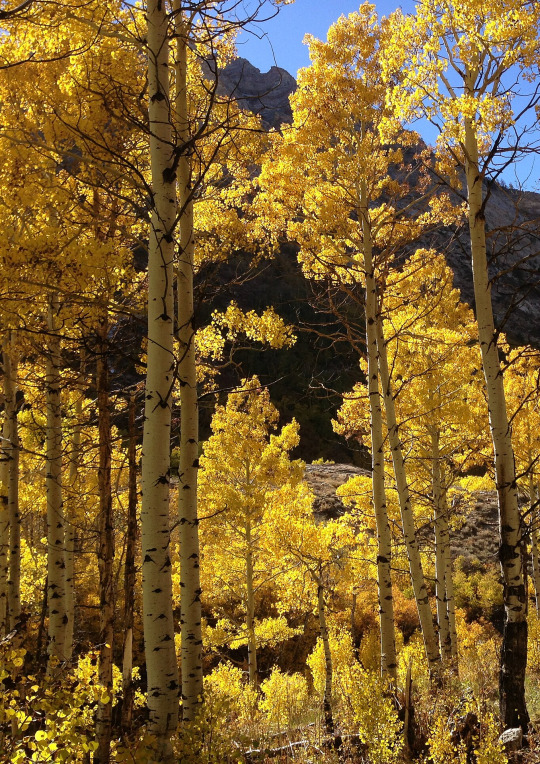

Last, but certainly not least, Populus tremuloides is a deciduous tree with a native range that extends across most of North America, especially throughout Canada, Alaska, and the Great Lakes region. Clonal colonies of these trees are common, each colony essentially being its own clone, and thus all a part of the same organism. A colony known as Pando is the oldest and heaviest organism in the world, at a potential maximum age of 12,000 years, and with a mass of 6 million kilograms!
Chag sameach! Feel free to add your own favourite trees onto this post!
(Images sourced from Wikimedia commons)
#tu bishvat#biology#jumblr#trees#nature#botany#thank you for tuning into Gabe's tree ramble#I just think they're neat :)#gabeposting#ALSO if I made any mistakes with any of the info or languages please please let me know and I'll fix them right away!#these are all transliterations so I might've fucked some of them up. Hopefully not. But y'know.#wikipedia and google were a lot less helpful than I expected#and if there are any language names I missed I'd be more than happy to add them ^^
4 notes
·
View notes
Note
Hello! Trick or treat! 🎃
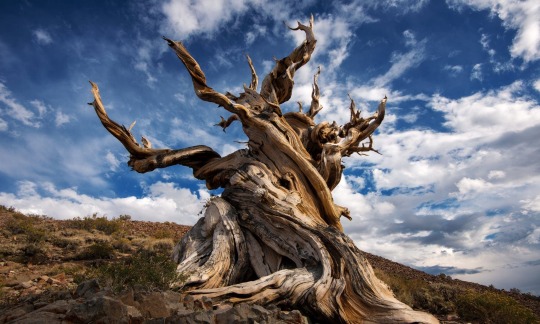
You get Methuselah, the oldest known non-clonal living tree!!
2 notes
·
View notes
Text

At more than 2,300 years old, Jaya Siri Maha Bodhi is the oldest living human-planted tree in the world with a known planting date.

Old Tjikko, a Norway spruce tree in the county of Dalarna, Sweden, is living on top of roots that have been radiocarbon-dated to 9,550 years old. The tree is part of a clonal colony that was established at the end of the last ice age.
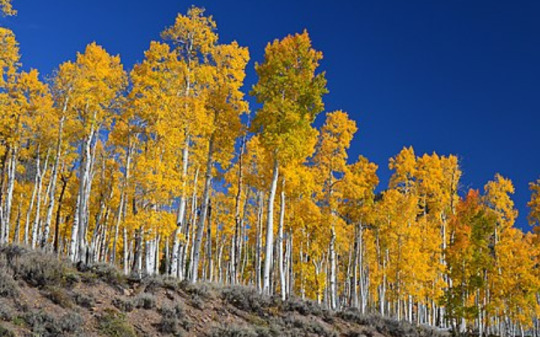
Pando (Latin for "I spread") is a clonal organism representing an individual male quaking aspen. Though it is difficult to know the exact age, Pando is estimated to be 80,000 years old.
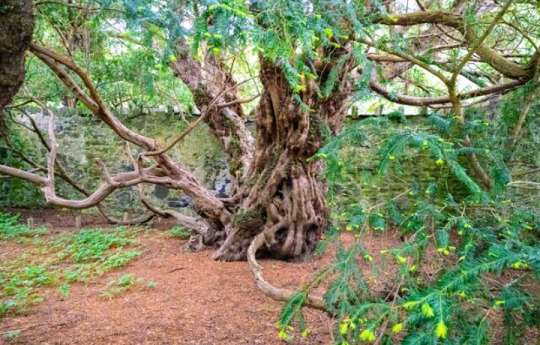
The Fortingall Yew is an ancient European yew (Taxus baccata) in the churchyard of the village of Fortingall in Perthshire, Scotland. Considered one of the oldest trees in Britain, modern estimates place its age at an average of 5,000 years.
The yew is male; however, in 2015, scientists from the Royal Botanic Garden Edinburgh reported that one small branch on the outer part of the crown had changed sex and begun to bear a small group of berries, an occurrence occasionally noted in some dioecious plant species, including yews. This is possibly as a result of environmental stress.
List of Oldest Trees
4 notes
·
View notes
Note
PLEEEEASE tell me you have some kind of source on the interview with the guy who cut down prometheus
SO the anecdote I shared on that post is like, over a decade old now, and secondary at best. My father is the one who heard of the story/interview in the car while listening to NPR probably around like 2010 so good luck to anyone trying to find an online version of that interview. It may not exist.
However, doing some digging of my own shows that there are some actual grains of truth to the story. The man who cut down Prometheus was named Donald Rusk Currey (who has a wiki page), who at the time was studying a time period known as the Little Ice Age. He was initially taking bores, which is SOP when studying dendrochronology and relevant fields, but the rings of Prometheus were too small to count accurately, so he went to the NPS and asked "hey, is it okay if I cut this tree down for my studies? Not like it's the last bristlecone pine or the removal of this one tree will cause serious environmental damage." The NPS agrees and he cuts down the tree so he can better count the rings and get an idea of the tree's age and thus a better idea of what the environment during the Little Ice Age was like.
You do not know you have cut down the oldest known non-clonal tree until you have cut down the oldest known non-clonal tree and start counting its rings.
Years later the controversy about it started up, people asking "how could you, how dare you, why was that necessary" of both Currey and the NPS. By this point Currey had already finished up his study and moved on. He was studying salt flats in the Great Basin.
Now, did he move to salt flats because he was responsible for cutting down Prometheus and he wanted to move to some thing he couldn't kill, or was it just a natural progression of his field as a geologist? I don't know. I didn't find anything from him stating that he wanting to avoid d killing more significant trees, and he was incredibly successful after that, publishing several papers and getting cited regularly. The only places I found saying that he moved to salt flats is because he didn't want to study anything he could kill were places like Reddit or click bait style articles that are know to exaggerate stories and add in elements to make them seem more interesting.
But do your own research. Come up with your own conclusions. Just be careful what trees you cut down
4 notes
·
View notes
Video
Aspen Grove in Fall Forest by Uschi Via Flickr: Golden autumn colors in Golden Gate Canyon State Park (Rocky Mountains, Colorado). Aspen is a common name for certain tree species; some, but not all, are classified by botanists in the section Populus, of the poplar genus. All of the aspens typically grow in large clonal colonies, derived from a single seedling, and spread by means of root suckers; new stems in the colony may appear at up to 30–40 m (98–130 ft) from the parent tree. Each individual tree can live for 40–150 years above ground, but the root system of the colony is long-lived. In some cases, this is for thousands of years, sending up new trunks as the older trunks die off above ground. For this reason, it is considered to be an indicator of ancient woodlands. One such colony in Utah, given the nickname of "Pando", is estimated to be 80,000 years old, making it possibly the oldest living colony of aspens. Some aspen colonies become very large with time, spreading about 1 m (3.3 ft) per year, eventually covering many hectares. They are able to survive forest fires, because the roots are below the heat of the fire, with new sprouts growing after the fire burns out. Aspens do not thrive in the shade, and it is difficult for seedlings to grow in an already mature aspen stand. Fire indirectly benefits aspen trees, since it allows the saplings to flourish in open sunlight in the burned landscape. Lately, aspens have an increased popularity in forestry, mostly because of their fast growth rate and ability to regenerate from sprouts, making the reforestation after harvesting much cheaper, since no planting or sowing is required. In contrast with many trees, aspen bark is base-rich, meaning aspens are important hosts for bryophytes and act as food plants for the larvae of butterfly (Lepidoptera) species—see List of Lepidoptera that feed on poplars. Young aspen bark is an important seasonal forage for the European hare and other animals in early spring. Aspen is also a tree of choice of the European beaver.(Wikipedia) Much better in Large On Black More from Colorado in my set Denver and USA © 2013 Ursula Sander - All rights reserved
#Natur#nature#landscape#Landschaft#Baum#Bäume#trees#trunk#branches#Baumstamm#Äste#Blätter#leaves#foliage#Laub#leaf#aspen#grove#populus#Espen#Wald#forest#woods#Berge#mountains#mountain#Rocky#Golden Gate Canyon State Park#Urlaub#vacation
2 notes
·
View notes
Text
0 notes
Text
A Development Could Kill One of the Oldest Living Things on the Planet. (Sierra Club)

Jurupa oak. | Photos courtesy of Aaron Echols
Excerpt from this story from the Sierra Club:
Few living organisms can claim to be 1,000 years or older. The ones that can are most likely trees. From Methuselah, the Eastern Sierra’s nearly 5,000-year-old bristlecone pine, to Pando, a clonal colony of quaking aspens in Utah more than 14,000 years old, these ancient beings provide a snapshot of our world.
The US Forest Service rightly protects Methuselah and Pando so travelers far and wide can gain perspective on our brief human lifespan and the mark we leave on Earth. Another of these neolithic wonders is an oak between 13,000 and 18,000 years old in California’s Riverside County, but it’s being denied the protection it desperately needs.
The Jurupa oak, an 80-foot-long Palmer’s oak shrub (Quercus palmeri), is one of the oldest living organisms on Earth. This clonal colony sprouted among saber-toothed cats, giant ground sloths, and mammoths during the Pleistocene era. However, the future of the oak is now in peril thanks to a decision by the Jurupa Valley City Council. In September, it narrowly agreed to approve a sprawling 917-acre development. The council voted 3-2 to allow a massive warehouse complex, chain restaurants, salons, and breweries just 450 feet from the oak. It will increase Jurupa Valley’s population by 6 percent, bulldozing more than 200 acres for homes and 140 acres for industrial and business parks.
Despite the dangers to new residents and the surrounding community, developers are planning to build all of this smack dab in the middle of an area east of Los Angeles that’s designated as a high-risk fire hazard severity zone. So why didn’t the Jurupa Valley City Council protect the ancient and enduring Jurupa oak as the Forest Service did Pando and Methuselah? The simple answers are location and money. The oak’s rocky outcrop is in an area gradually being devoured to accommodate our obsession with online shopping. In its place, the city wants to see a vast landscape of warehouses and roads clogged with trucks going back and forth 24/7. In 1980, the Inland Empire, which encompasses Jurupa Valley, had 234 warehouses. Now, there are more than 4,000, covering nearly 26,000 acres of the region. In the eyes of the warehouse industry and the city, the world’s oldest Palmer’s oak—and the last in its watershed—is disposable.
This enduring oak, with its spindly leaves and ancient roots, shouldn’t be thrown away like packaging from an online purchase. But that’s the kind of casual treatment city officials have provided, feigning certainty that nearby development will not harm the oak while admitting they can’t answer lingering questions.
How far do the Jurupa oak’s roots extend, and where does its water come from? How might increased temperatures from fossil-fuel-driven climate change and the urban heat island effect harm the oak? Could heavy machinery vibrations during construction jar loose the rocks supporting the oak’s roots?
These crucial questions need to be answered to ensure a responsible project that protects the Jurupa oak. Unfortunately, the city approved the massive development without answers to any of them, risking death for the world’s third-oldest organism.
That’s why the Center for Biological Diversity and other environmental groups filed a lawsuit under the California Environmental Quality Act seeking a 100-acre preserve to safeguard the oak. This legal fight should not even be necessary. Anyone who has strolled through the ancient bristlecone forest or stood beneath the 3,000-year-old Grizzly Giant Tree in Sequoia National Park understands that the value of these ancient beings far outweighs another Southern California warehouse.
6 notes
·
View notes
Text
Are you looking for a book that will take you on a magical journey through time and teach you about the importance of our environment? Look no further than The Seeking Tree by John Hoskison! This delightful children's book is not only beautifully illustrated with full-page color images, but it is also a powerful reminder of the fragility of our planet's ecosystem. The story is centered around a young sapling that is eager to connect with the world around it. However, humans are too busy to pay attention, and the sapling must wait patiently for a thousand years. As humanity evolves and trees disappear, the sapling continues to watch and wait until one day, a young girl discovers it. With the girl's help, the sapling can change the course of history and save the environment. One of the most fascinating aspects of The Seeking Tree is the way it weaves real-life facts into the story. For instance, we learn about the Great Basin Bristlecone Pine, the oldest known non-clonal tree in the world, which is estimated to be more than 5,060 years old. We also learn about the unique adaptations that trees have developed to survive the harshest conditions, such as going into a dormant state during droughts. But perhaps the most important lesson of the book is that we are all part of an intricate and connected ecosystem. The natural world is not disposable, and there is a delicate balance of give and take that must be maintained. In a rapidly changing climate with concerns over global warming, The Seeking Tree reminds us to pause and marvel at the beauty of our natural world. One of the things that I loved most about The Seeking Tree is how engaging it is for readers of all ages. While it is marketed as a children's book, the story and the images are so captivating that adults will enjoy it just as much. The author takes us on a journey through time, showing us how humanity has evolved alongside the environment. We see the changes in seasons and the different animals that populate the world, and we are reminded of the importance of preserving it all. Overall, The Seeking Tree is a magical and alluring book that will delight readers of all ages. It is not only a beautifully illustrated story but also a powerful reminder of the importance of taking care of our planet. With its historical fiction setting in North Carolina and incredible attention to detail, The Seeking Tree is a must-read for anyone who cares about the environment or simply loves a good story. So, what are you waiting for? The sapling is waiting for you to join the journey! Don't miss your chance to immerse yourself in a world of adventure and knowledge! Order your copy of the book now or get an exclusive 30-day trial of Audible and experience the thrill of listening to the story come to life. Hurry, the clock is ticking! Get your copy or trial today. Price: [price_with_discount] (as of [price_update_date] - Details)
0 notes
Text
Fun fact, by the beginning of the fourth age, lindwë is approximately 320 years younger than pando, the clonal aspen colony and oldest tree on earth (actual)
#you know#fun facts#that make sense#tbh I might shift their estimated birthdate a little later#i can’t actually tell if I was using tree years or sun years#and there isn’t a conversion btwn them that fully makes sense#the valinor time warping theories don’t actually help me create a timeline here#my blather
1 note
·
View note
